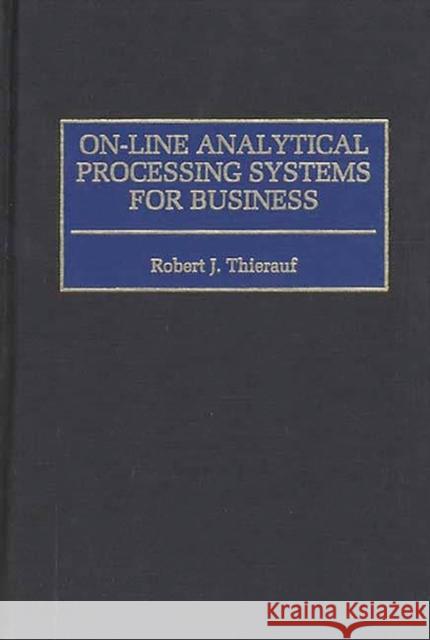On-Line Analytical Processing Systems for Business » książka
On-Line Analytical Processing Systems for Business
ISBN-13: 9781567200997 / Angielski / Twarda / 1997 / 352 str.
On-line analytical processing (OLAP) is clearly a new approach to information system technology--offering a much-needed way to make informed decisions better and faster. One of its most important characteristics is multidimensional analysis--analysis that goes beyond the conventional two-dimensional analysis and provides users with rapid retrieval of data from organizational databases, data warehouses, or both. Not only that, but most importantly, says Dr. Thierauf, it allows users to look at different dimensions of the same data, thus enabling them to do analyses across departmental and even corporate boundaries. How it works and OLAP's many benefits to aid users in the public and private sectors is spelled out here, comprehensively yet concisely, and with the author's customary well-developed examples and clear prose. His book will be important reading for people at all levels of management and in all types of organizations.
Another way of viewing OLAP is getting a typical company out of the custom-report-writing business and into the data-cube-server building business. An OLAP data structure can be thought of as a Rubik's Cube of data that users can twist and twirl in different ways to work through what-if and what-happened scenerios to get at the "whys" of the situation. Within an OLAP environment, the focus is on performing dictionary definition and maintenance as well as mapping flat files or relational columns to dimensions and measures. Although this may sound like a lot of work, managing one data cube is more efficient than writing a number of custom reports. Currently, some vendors provide administrative tools to get the data into the cubes in the first place, in the proper form, and on a regular basis. Hence, the job of managing data has been simplified for users.











